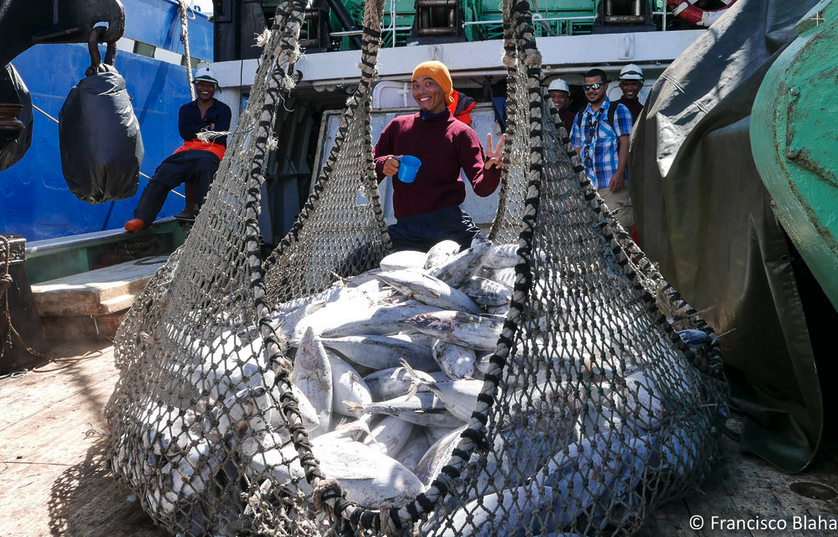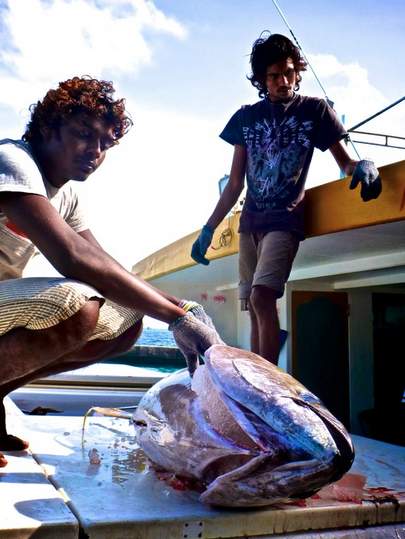Two key tuna management organizations took a significant step forward in the adoption of electronic monitoring (EM) in 2023. The Indian Ocean Tuna Commission (IOTC) and the International Commission for the Conservation of Atlantic Tunas (ICCAT) adopted standards for the use of EM for fishery monitoring in their convention areas. The adoption of standards follows years of technical work and diplomacy and provides EM with formal recognition as a fishery data source in these regions.

How are these Commissions involved in fishery monitoring?
IOTC and ICCAT are two Regional Fisheries Management Organizations (RFMOs) focused on conservation and sustainable utilization of tunas and tuna-like species (and highly migratory oceanic elasmobranchs, for ICCAT). To deliver on their management obligations, these RFMOs need fishery data, including information on catch composition, fishing effort, gear, and compliance. EM can meet many of the data requirements of these RFMOs, and therefore has significant potential to support fishery management as another data collection tool. Data sources to date have included human observers onboard vessels, vessel monitoring systems (VMS), port-based and at-sea inspections, etc.
IOTC and ICCAT are two of five RFMOs focused on tuna and tuna-like species. Globally, the five tuna-focused RFMOs cover just over 90% of the world’s oceans. All have monitoring and reporting requirements in place, such as VMS, human observation and catch and effort reporting. These RFMOs have all accepted or endorsed EM as a fishery data collection method.
Why are standards needed for EM?
In any context, standards enable a common understanding of a minimum baseline requirement. They also support comparability between datasets, such as when information is collected through otherwise separate programs. Among the tuna-focused RFMOs, various standards are already in place specifying requirements for monitoring and data collection, e.g., the Western and Central Pacific Fisheries Commission’s (WCPFC) Regional Observer Programme and VMS standards.
For EM, standards also serve to eliminate approaches that will not meet monitoring objectives. The scope of standards for EM may vary among management bodies, while broadly covering program, system and process standards—from program design through hardware specifications and installation, information capture, review procedures, and data documentation. For example, hardware and system requirements could include waterproofing ratings (such as IP66 or IP68), camera frame rate and resolution, encryption, and tamper evidence. Logistical standards could include operational processes to ensure secure data collection. Standards relating to review could specify training requirements, review levels, procedures for reviewing imagery, etc. For some elements, outcome-driven standards may be most appropriate, such as specifying what imagery EM systems must capture, rather than requiring a specific number of cameras.

As with any standards-based approach, an approval process can also be applied to ensure participating programs meet the overarching requirements set.
How are other RFMOs progressing with EM adoption?
For both IOTC and ICCAT, the Commissions’ adoption of standards follows the endorsement of voluntary standards for EM several years ago. The three other tuna-focused RFMOs all have EM-focused working groups or workstreams in place, or in development. The Inter-American Tropical Tuna Commission’s working group on EM continues its discussions of EM program components, including standards development. The Commission for the Conservation of Southern Bluefin Tuna has not developed EM-specific standards to date, but has updated its scientific observer program standards to accommodate EM. At its 2023 Commission meeting, WCPFC tasked its working group covering EM with developing a set of interim EM standards for adoption at the Commission’s 2024 meeting. This follows the development of draft standards by this working group, formally circulated in 2020.
What lies ahead?
Information requirements that can be met by EM are shared across RFMOs. The role of EM as a data collection tool for these fishery management bodies seems set to increase, now that two RFMOs have formally adopted EM standards. Standards will require ongoing review to ensure they remain current. Future updates could incorporate, for example, standard elements for additional fishing methods, new hardware technology, AI adoption into review protocols, additional data fields and refinement of existing data fields.
Of value to fishery managers, EM practitioners, and other stakeholders, the adoption of EM standards by RFMOs supports new opportunities to improve fishery data at scale. Here’s hoping 2024 sees more advances like these.
Johanna Pierre is Director and Principal Consultant at Johanna Pierre Environmental Consulting.
Thanks to Francisco Blaha for the use of his photos.


